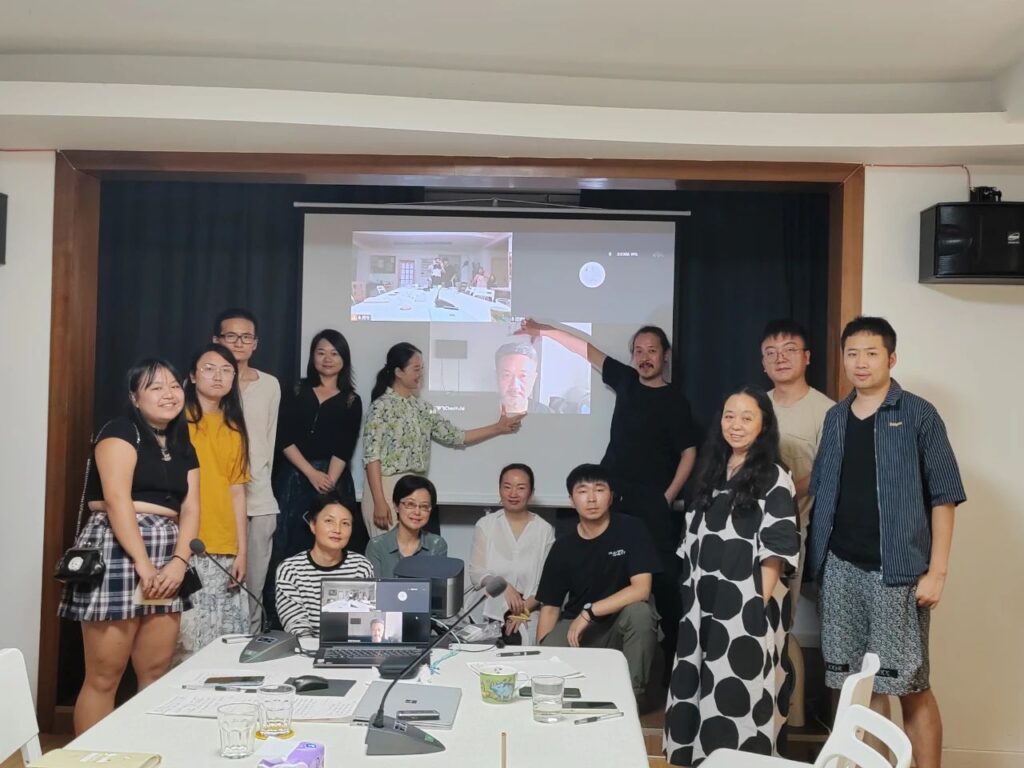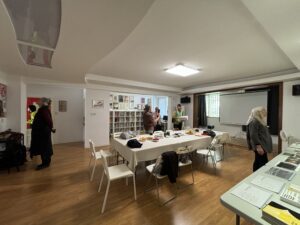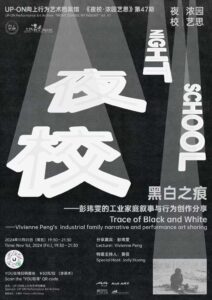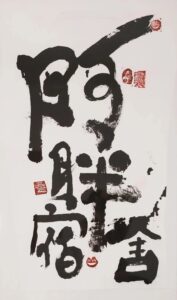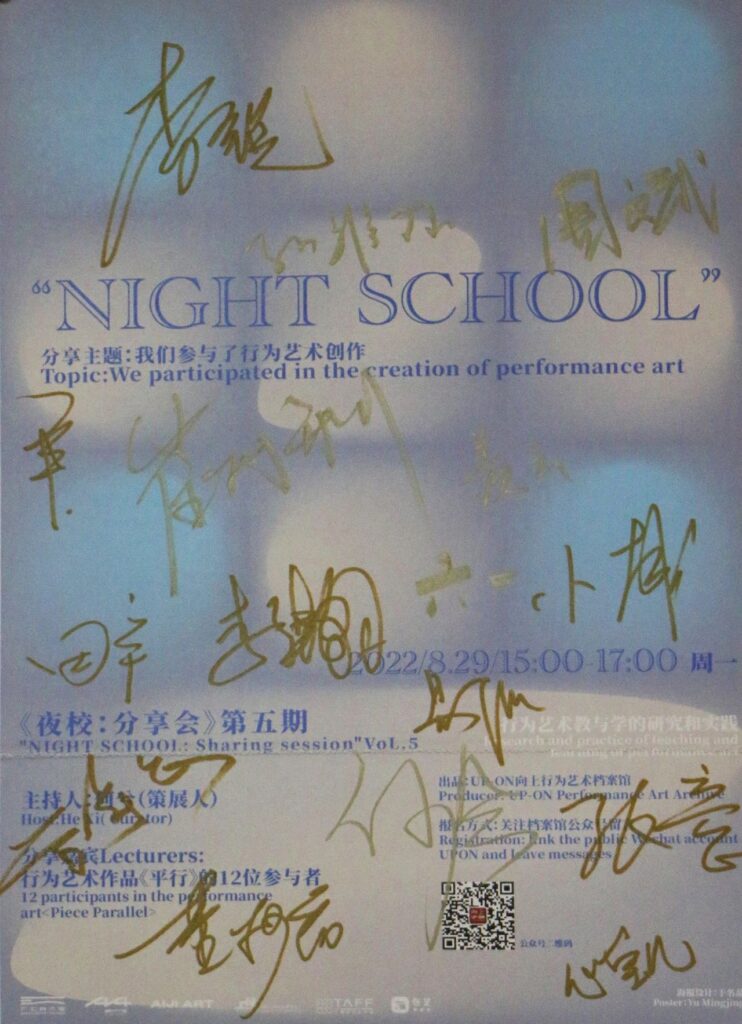
In the blink of an eye, Night School has reached its fifth installment. Prior to this, artist Chen Yufei’s performance art work Parallel was successfully selected for the second installment of Downward Bound at the Archives, and Chen, along with twelve participants, traveled to Tiantai Mountain to execute and complete the work. This issue of Night School is the result of that, and we have invited the artist, the participants, as well as invited observers and a small number of viewers to join us at the archive for a small talk, and to rethink the moments of the journey to Tiantai Mountain.
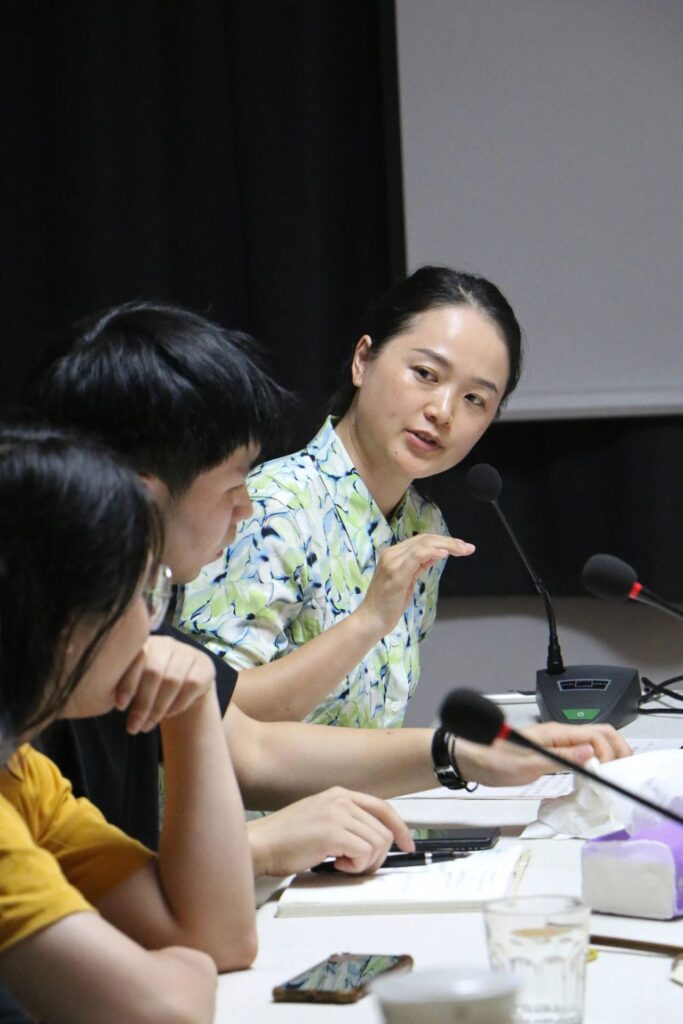
On August 29, 2022, at 3:00 pm, the event officially began. Under the guidance of moderator He xi, Mr. Chen Yufei, the creator of this work, spoke first, reviewing the origins of this creation:
He xi: First of all, I’d like to ask Mr. Chen Yufei to briefly reintroduce the background of the creation of Parallel and the conceptual explanation, so that we can reflect on it in this context.
Chen Yufei: Thank you all for coming today! In the past few years, I have been thinking about and practicing how to make art outside of the studio and gallery. Whether it’s at art festivals or participating in residency programs or making art at social sites, this way of working has brought some changes to me personally; another reason is that a few years ago I came into contact with the theories of “relational aesthetics” and “participatory art” of Beriod and Bishop. Another reason is that a few years ago, I came across the theories of “Relational Aesthetics” and “Participatory Art” of Beriod and Bishop, although I have not systematically read their writings, but only learned about them through the introduction of some articles in the media, I was still attracted to them, and the process may have misinterpreted their doctrines, but it did trigger my thinking and added my own understanding.
Mr. Chen Yufei said that he agrees that there should be a parallel relationship between human beings and nature, and this is also the idea that the work “Parallel” hopes to convey. This idea has also permeated the four scenes set up in the work: whether we can be as upright as a tree, as calm as a stone, as close to water as a stone, and as coherent as flowing water.
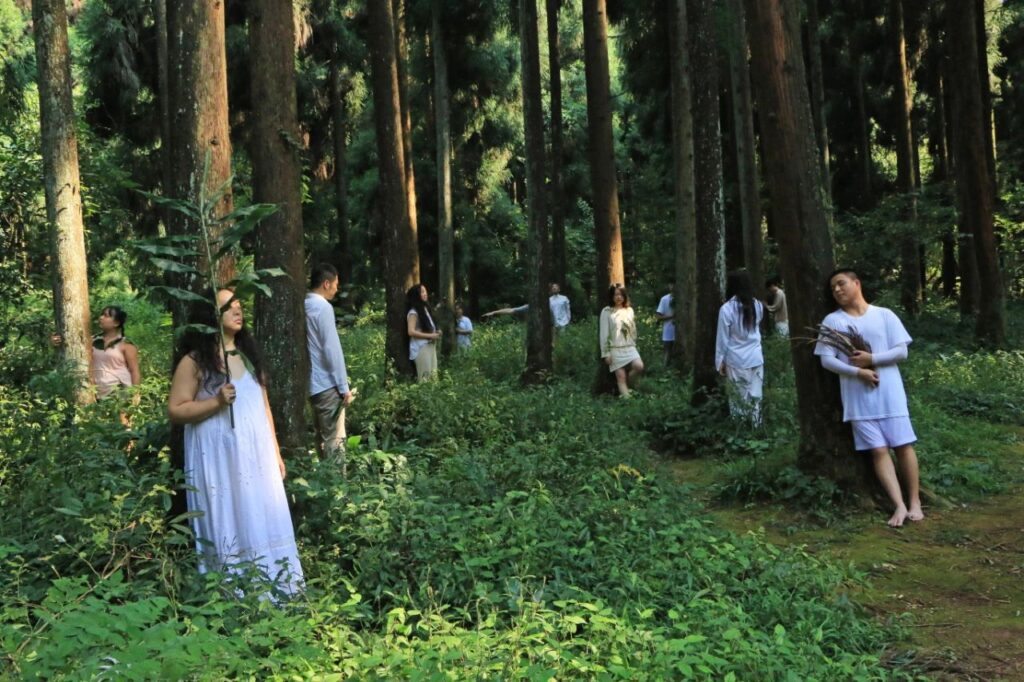
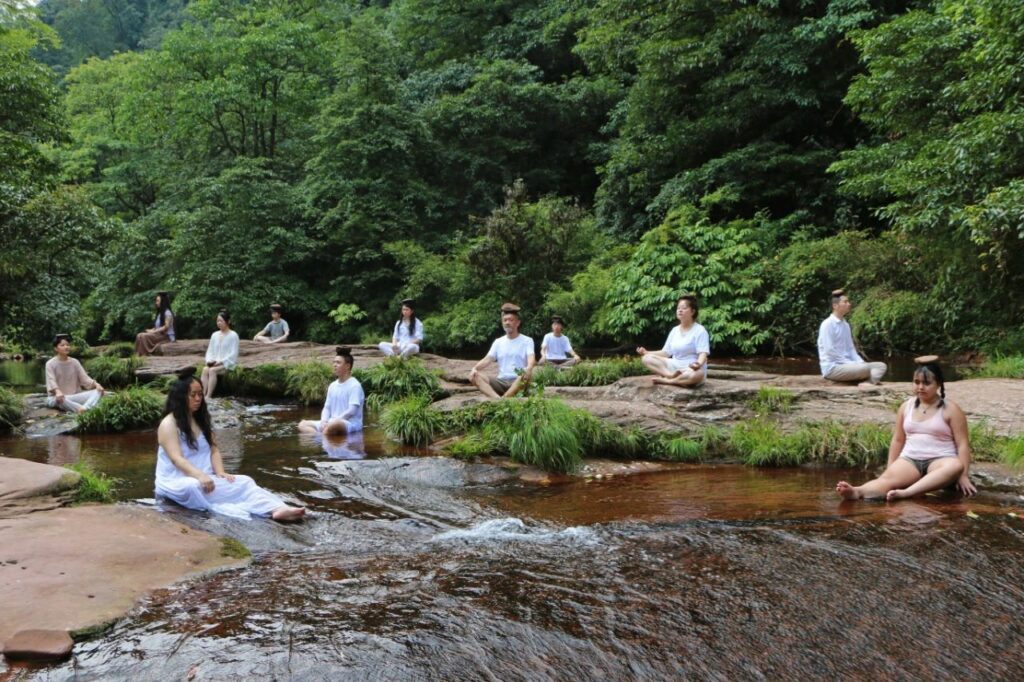
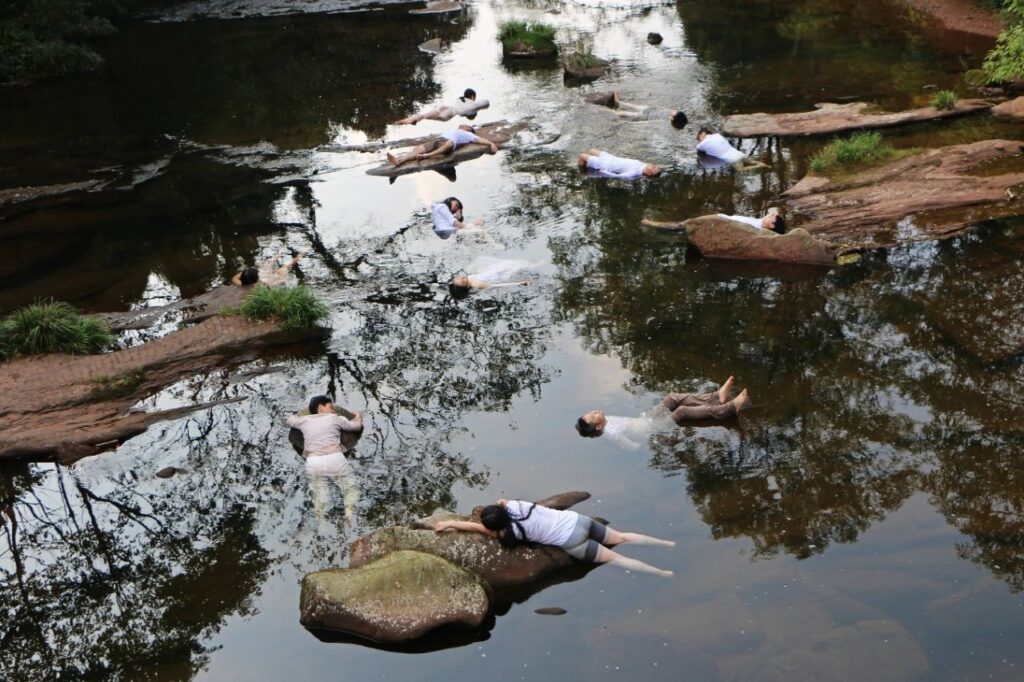
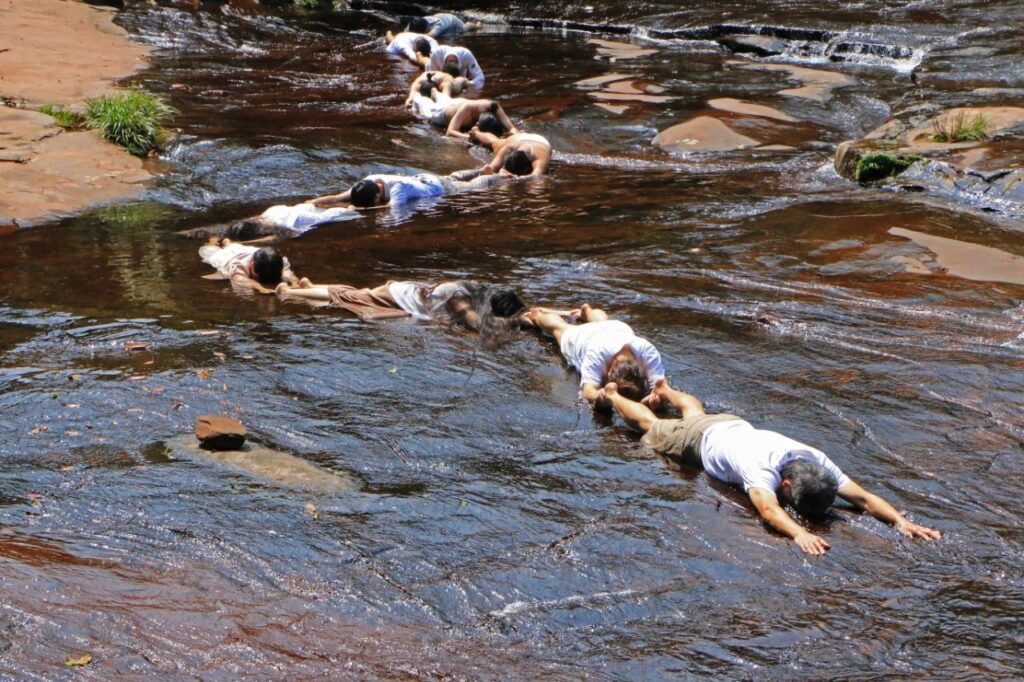
These four scenes naturally constitute four questions, which must be the thoughts that Mr. Chen Yufei has left for himself and for everyone else. The twelve participants of this work were undoubtedly the most deeply touched, and they all had their own feelings and opinions when they heard Mr. Chen Yufei’s sharing. Due to space constraints, only a limited number of paragraphs have been captured here for you to experience the sparks of the discussion:
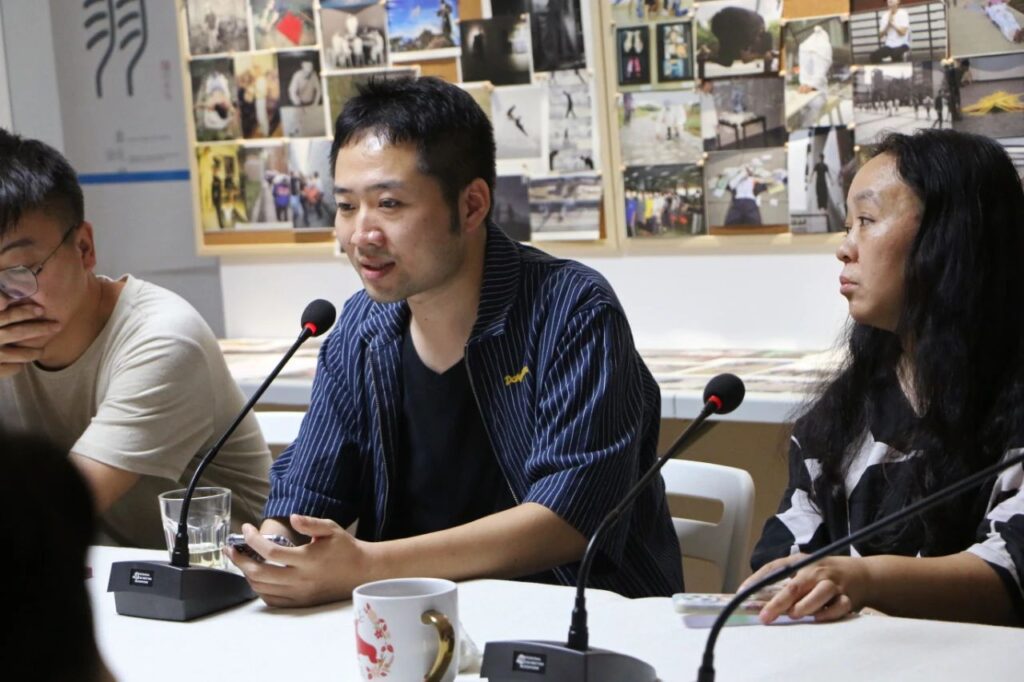

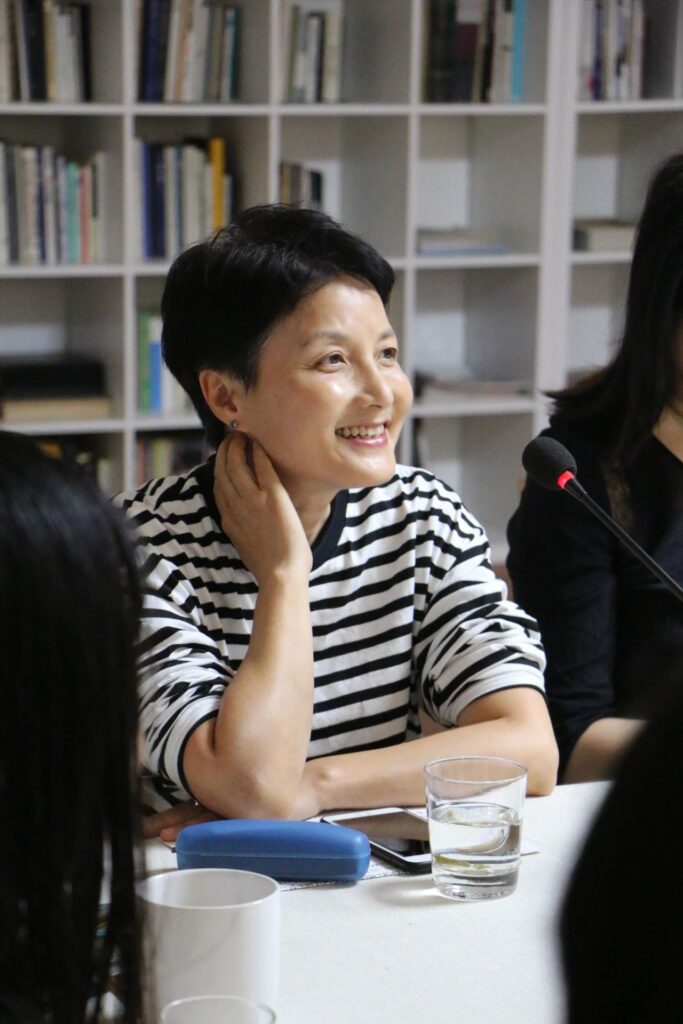
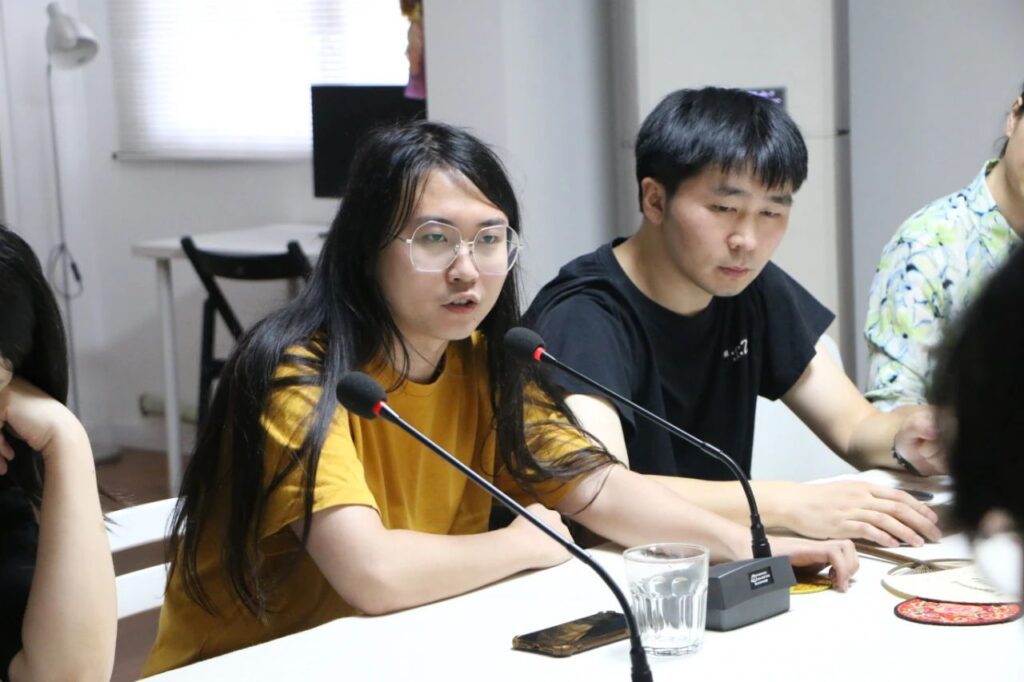
Yi Yan: I was in the WeChat circle of friends to see Dong Jie forward this activity recruitment, the beginning of no determination to participate, after a few days to see that it is not yet full, Dong Jie said that you go to try, I looked at the content of the activity found to be in the woods in the water to implement the focus is on the interaction with nature, just in my point of interest. I usually live in the backwoods of Castle, with the forest right outside my window and a river below my house, and I often go swimming in the summer, so this activity was an easy thing for me to get into.
Of the four scenes, the last one lying on the rocks in the water has the most relaxing feeling, my face resting on the rocks, its surface moss, soft, back feel the heat of the sun’s rays, hands and feet immersed in the cool water, the current gently massaging the skin, close your eyes and ears to hear the sound of the wind, the sound of the water, and know that surrounded by your fellow travelers and feel at ease, so, in the embrace of that kind of nature, the worldly everything So, in the embrace of that kind of nature, all the worldly everything disappears, the mind is empty, the five senses are completely open, only silent feelings and enjoyment, and finally the end of the shooting are still immersed in which do not want to come out.
Tian Yu: My name is Tian Yu. It is an Internet designer, speaking is not very good at it. Then is because engaged in the work of the Internet, so in front of the computer time is more, well, after the work, like me less contact with nature, see this project is very good. I like this project very much, especially in the stream with the stone on top of my head, feeling the breeze, I also integrated into nature, like a stone, but also reflect on their own state of life, but also to bring the stone back to keep as a souvenir.
Li Rui: I am currently a middle school art teacher and an artist. I met Mr. Chen Yufei at the UP-ON International Live Art Festival in 2017, and some time ago I saw on the public website that Mr. Chen Yufei’s Parallel had been selected for the Downward project and recruited volunteers to participate, which is typical of this kind of participatory art. In my daily creation, I seldom participate in other artists’ works, and even if I do, it’s just an independent work participating in a project, or an impromptu participation in a performance scene.
Then I followed up on Mr. Chen Yufei’s comment that he was influenced by two theorists, Nicholas Borriaud and Clair Bishop, by briefly discussing their theoretical differences: whether participatory art focuses on negotiation or confrontation. Berthold argues that participatory art is about constructing relational scenarios of harmonious coexistence, while Bishop argues that these harmonious coexistences are illusory, and that true participatory art emphasizes confrontation. I would also like to have more exchanges with Mr. Chen Yufei on this issue.
Each participant implies a very different perspective, as if there is a parallel relationship between them, and this is the significance of participatory art. Unlike traditional art forms, in participatory art, the identity of the artist and the participant is equal, and the entry of the participant changes the inherent meaning of the work, and both the artist and the participant are the creators of the meaning of the work. Through the irreconcilable differences between the participants, the work of art is no longer presented in a unidirectional way, but builds up its own tension with an open gesture. In participatory art, nothing stays within the artist’s predetermined framework of meaning; the meaning of the work is in a constant state of generation. This time we have invited two observers, and we believe that with their professional perspectives, we will be able to better capture the ever-changing qualities of participatory art.
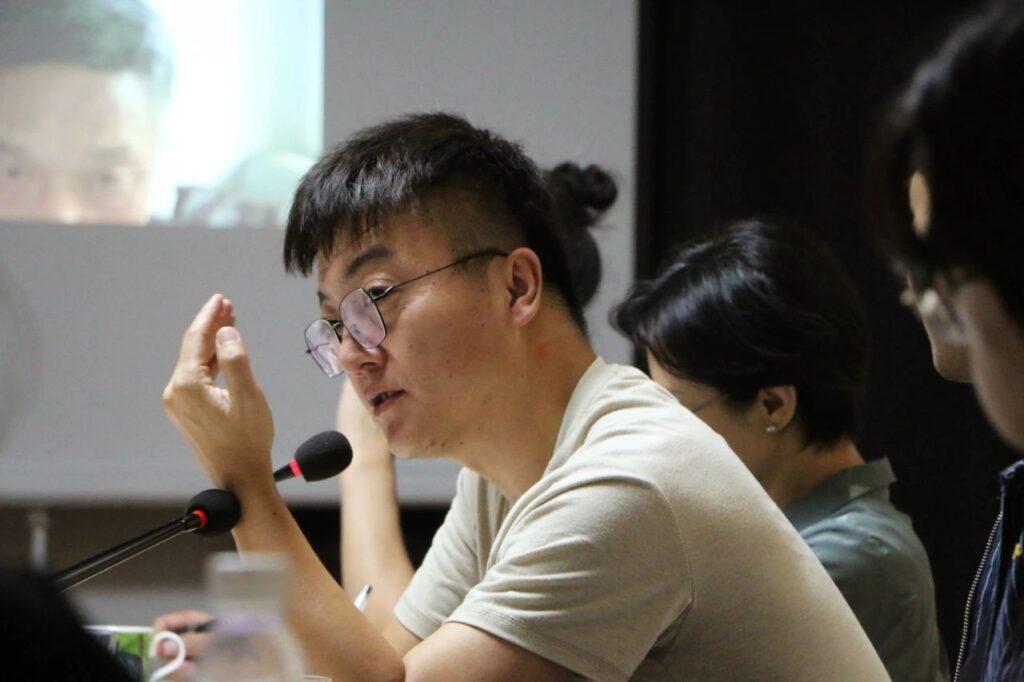
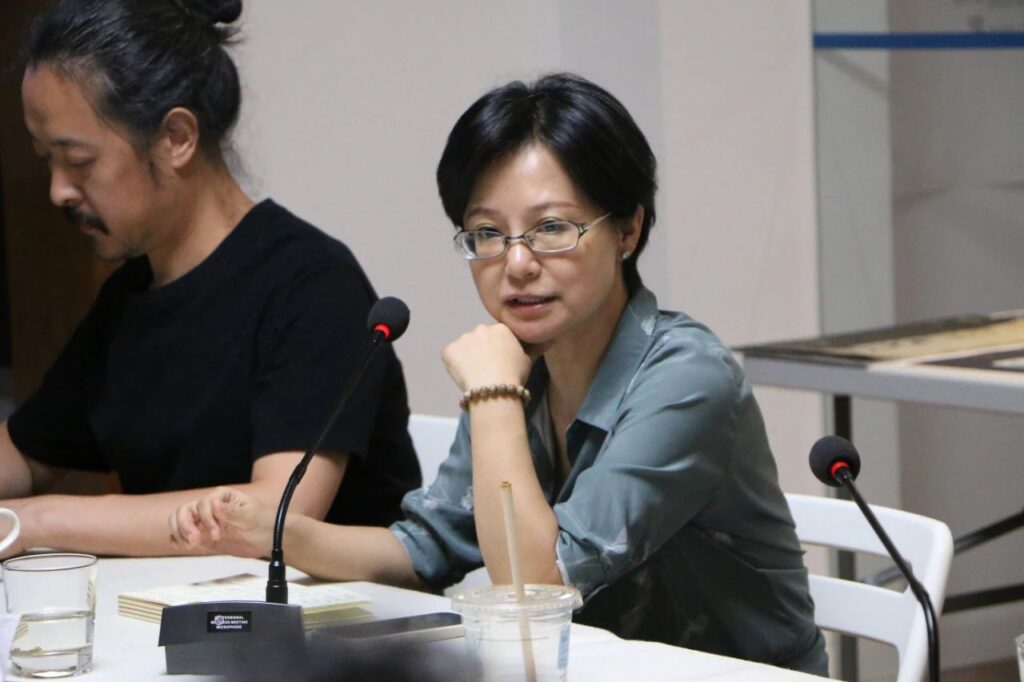
Cui Fuli (curator): I first saw Mr. Chen’s proposal for this work in the first issue of Dig in open Call for Entries. In my opinion, this work is related to the body and perception. In recent years, due to objective factors, we may feel that our body’s perception of the outside world has become more and more numb and fragmented in our daily life, so this work may be reshaping a kind of body’s perception ability.
In fact, when I did the “Train Project” in 2020, I had a similar experience of perception. At that time, I was involved as a curator, and I didn’t realize that I had been kidnapped within an established framework of experience. Later, when I was with the artist Wei Zhen in a canyon, across a dam, we both took off our clothes without consulting each other and had a conversation there from a long distance away. I came back and wrote an article called “The Shape of the Wind”. The wind has no shape. But it was at that time when I took off my clothes and I was smoking a cigarette, and I thought the cigarette had no sound, but at that scene I felt that the action of smoking, the sound of smoking, was magnified infinitely, and when I felt the wind in the canyon passing over me, it shaped me. In that moment my perceptions were opened up and that moment would make me feel like my body was incredibly real.
This reminds me of the feelings of the participants in Parallel, a feeling of inner consciousness summoning the body, which is similar to what I felt at that time.
Zhang Yi (Professor and Art Scholar, Sichuan University): I think Mr. Chen’s work is very successful in that he has constructed a scenario that gives us a sense of the present. Like Heidegger’s analysis of one of Trakl’s poems, in which Trakl describes a wanderer on a snowy night, when he crosses the threshold and comes into the warmth of the room, the threshold as a threshold is well captured by Trakl, and in Heidegger’s words, the threshold constitutes a “place”. Similarly, I believe that when we were in contact with the wind, the stones, the sun, and other natural things, our senses must have been awakened, and we became the objects themselves.
Becoming the object itself is a bit like the games we played when we were young, like the “wooden man” we played when we were young, but when we become adults, we play various social roles more often. So when I heard about this work, I really felt that it was a kind of cultivation of humanity. The beauty of this kind of work is that it calls us back to the original, infantile state, as Mr. Chen said, to establish a connection with things, which is a very meaningful moment.
I would also like to talk about the “relational aesthetics” of Boreaud and the “dialogic creation” of Grande Kester. In fact, I think that the work we are facing today has greatly exceeded the scope of their discussion at that time. In fact, when we face the trees and the stones today, it is not about the relationship between human beings and human beings, but the relationship between human beings and nature.
In this year, we have experienced such a bitter summer. Then, I think that today’s philosophers like Harman and so on rethink about the object, in fact, is inspiring to us, they no longer think from the traditional “anthropocentrism”, but sincerely face to the object, face to the nature itself, and their thinking will take into account the importance of aesthetics. So I think that what I have heard from the participants today about their own feelings is a revelation that there is such an aesthetics of relationship towards objects.
The two observers again opened up a different perspective on our understanding of the work. After their speeches, Zeng Qunkai, as a member of the audience, and Wang Yiling, the director of the Downward project, also spoke about their concerns. Every archive event ends with a sense of satisfaction, and today’s discussion of the works in question was particularly close to our perceptions, thus arousing our participation in the topic. At the end of the event, a group photo was taken to conclude the fifth installment of the Night School.
